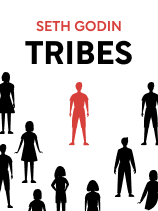

This article is an excerpt from the Shortform book guide to "Tribes" by Seth Godin. Shortform has the world's best summaries and analyses of books you should be reading.
Like this article? Sign up for a free trial here .
Do you know how to build a tribe? What does it require to start one and keep it going?
A tribe is a group of people with a shared vision and the drive to achieve it. You can build a tribe from scratch, or you can infuse a stagnating group with new vision and energy. To keep your tribe going strong, focus on improvement and communication.
Keep reading for more on how to build a tribe.
How to Build a Tribe
Now that we’re in the age of the internet, anyone can build a tribe practically instantly. The internet is such a powerful tool because there are only two prerequisites for a group of people to become a tribe:
- A shared interest
- A shared means of communication
The internet is the go-to method for communication these days, whether through social media or one of the many chat services like Discord and Slack. Furthermore, because the internet allows you to connect with millions of people in the blink of an eye, you can find others who share just about any interest you could imagine.
| Unfortunately, not all tribes are positive ones. For example, in his 2017 article How America Lost Its Mind, Kurt Anderson points to the internet as a major contributor to a rising extremism and disconnect from reality in American politics. In essence, Anderson is saying the same thing as Godin: The internet makes it possible to find like-minded people (a tribe) no matter what your thoughts and beliefs are. However, for Anderson, that ease of finding and building a tribe isn’t a good thing—it means that people with extreme and untrue beliefs can find others who will support those views, while shutting out more moderate voices that might help balance out the conversation. |
An Alternative: Find a Tribe
Godin points out that there are already countless tribes in the world waiting for the right leaders to come along. Usually, these are tribes that are too stuck in their status quo to achieve their visions—for example, a company that fails to turn a profit, or a small group that fails to attract new members.
Instead of building a tribe from the ground up, a visionary leader can turn a stagnating group into an exciting new movement.
| Case Study: Apple In his business book Good Strategy/Bad Strategy, Richard P. Rumelt gives a clear example of the invigorating effect that a new leader can have on a group: In the mid-to-late 1990s, Apple was struggling badly. Microsoft had practically cornered the computer market with Windows 95, and Apple’s CEO Gil Amelio was floundering with an incoherent business strategy—layoffs, pointless reorganizations, and new services that didn’t mesh with Apple’s current business model. When Steve Jobs stepped in as the new CEO, Apple was on the verge of bankruptcy. However, Jobs implemented a bold new vision for the company, and eliminated anything that didn’t serve that vision. With Jobs’s vision and his leadership, Apple went from a soon-to-be-bankrupt company to a powerhouse in the computer industry—and it now has a tribe with members all over the world. |
Improve Your Tribe
Part of building a tribe is continual improvement. Godin says that people tend to think size matters most in a tribe—that a leader’s goal should be to recruit as many people as possible into the tribe. Such people believe that simply having more members will somehow make their tribe better. However, Godin argues that connection is more important than size; that it’s better to have a small group of true believers than a huge number of uninvested people in your tribe.
A tribe is a group of people with a shared vision and the drive to achieve it. When members are strongly connected to each other and to the leader, they’ll have that shared passion the tribe needs.
Furthermore, the best way to grow your tribe is to have members with strong connections to non-members; those members will do your recruiting for you. Thus, although it’s counterintuitive, the best way to expand your tribe is to not focus on expansion—instead, focus on improvement.
| People Share Their Passions In Purple Cow, Godin goes into more detail about how passionate members of a tribe can spread your ideas and recruit new followers. Briefly: Most people aren’t looking for new things. They’re content with what they currently have, and aren’t willing to take a risk on some new idea or product. However, passionate members of a tribe (innovators and early adopters, to use Purple Cow’s terminology), will vouch for your idea. Those people will then convince their friends and family that your idea is worth adopting—that your tribe is worth joining. This works because people are much more likely to listen to someone with whom they already have a personal connection, rather than a leader who’s just sending out blanket advertisements to reach as many people as possible. |
Improve Communication
One of the things a tribe needs is a means of communication. So far, we’ve mostly focused on being a leader and communicating with the members of your tribe. However, there are actually four different kinds of communication within a tribe, and all four are necessary:
- Leader to members
- Members to leader
- Member to member
- Member to outsider
Godin asserts that one of the surest ways to improve your tribe is to make sure that those four types of communication are convenient, comfortable, and effective.
| Two-Way Communication In The Effective Executive, author Peter Drucker suggests leaders ensure open, two-way communication between leadership and members by: Taking responsibility for their own contributions and outcomes. In other words, openly stating what they believe they’re bringing to the group, and how they intend to use those abilities or resources. Asking members to do the same. Each person should have the chance to say what he can contribute to the group and how leaders could make the best use of those contributions. Drucker says that companies (which are one type of tribe) often hobble themselves by only focusing on the first type of communication: leader to members. However, he continues, when employees aren’t asked to contribute to the conversation, they’re not receptive to what the leadership says—nobody likes being talked at instead of talked with. |
Part of building a tribe is continual improvement, and effective communication is crucial.

———End of Preview———
Like what you just read? Read the rest of the world's best book summary and analysis of Seth Godin's "Tribes" at Shortform .
Here's what you'll find in our full Tribes summary :
- What tribes are—and why we need them
- How to create and lead a tribe effectively
- Why we need leaders today more than ever






